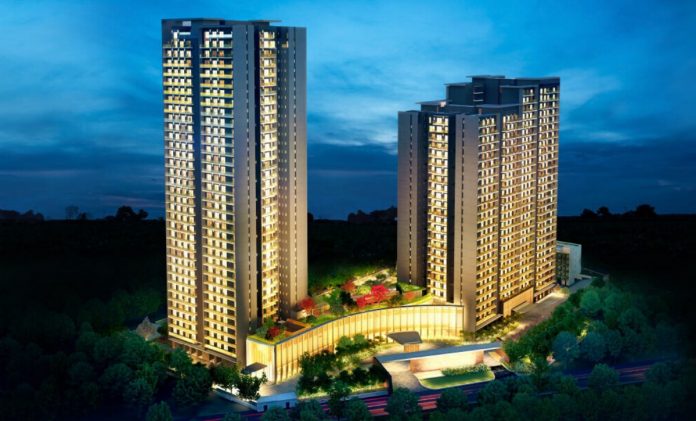This article is written by Jeffy Johnson, currently pursuing B.A. LLB (Hons.) from School of Law, CHRIST (Deemed to be University). This is an exhaustive article on re-development in the real estate industry.
Table of Contents
Introduction
The real estate industry is globally and internationally accepted. Concerning the land sector, it can be subdivided into retail, commercial hospitality and housing. The growth of this sector can be expanded by the company environment and also the demand for a place to be construed as the office both in urban and non-urban places. The progress of this industry is ranked third among major sectors but concerning direct and indirect effects on the economy. This sector of real estate accommodates non-resident India (NRI) investments and funds in short term and future needs. Bangalore is most favourable for matters of property investment. Other places with the same benefits include Pune, Chennai, Goa, Delhi, Ahmedabad and Dehradun.
The re-development trend in real estate has been prompt in western countries. Recently it has also gained momentum in India too. But India is highly populated and the central areas have been located with most of the property. Due to which land development procedures have come into action. Redevelopment of properties is a multidimensional business. It is based on the activity that includes relaunching, releasing and makeover. This will improve the existing properties and provide them to consumers. The main individuals behind converting the paper ideas into real property developments are the developers.
Market size
By the advent of 2040, the land market will grow to Rs. 65,000 crore (US$ 9.30 billion) from Rs. 12,000 crore (US$ 1.72 billion) in 2019. The land sector in India is predicted to achieve a market size of US$ 1 trillion by 2030 from US$ 120 billion in 2017 and contribute 13 per cent of the country’s GDP by 2025. Retail, hospitality and commercial land are also growing significantly, providing the much-needed infrastructure for India’s growing needs. Indian land has increased by 19.5 per cent CAGR from 2017 to 2028. Sectors, ITeS, retail, consulting and e-commerce have registered high demand for office space in recent times.
Commercial office stock in India is predicted to cross 600 million square feet by 2018 end while office space leasing within the highest eight cities is predicted to cross 100 million square feet during 2018-20. Co-working space across the highest seven cities increased to achieve 12 sq ft by the highest of 2019. Within the first nine months of 2019, the office sector demand with commercial leasing activity reached 47 mn sq ft. During 2019, the office leasing reached 60.6 million sq ft across eight major cities registering a growth of 27 per cent year on year. In 2019, Bengaluru saw the absolute best volume of office space leased at 15.3 MSF, followed by Hyderabad at 12.8 MSF.
Concept of re-development
It endorses the positive aspects of India. It is mainly the task of renovating by repairing broken pipes, cracked walls and so on the old building. This process is called redevelopment. This requires huge amounts of funds constantly. This led to redevelopments opening their doors to real estate. The majority of the places in Bangalore, Mumbai and Chennai are stagnated and to repair these areas requires a lot of funding that cannot be exercised most of the time. Then the incorporation of the re-development comes to the rescue. In cities like Mumbai, most of the buildings are old and not looked after as they are owned by the co-operative society. Then the technique of redevelopment can be devised. They can be demolished and reconstructed. When owners understand the benefits of redevelopment they agree with the developers. In this case, these owners also provide some consideration to this. Transferable Development Right (TDR) and the Floor Space Index (FSI) can be used here. These old buildings are converted into better ones.
Scope of re-development
The term redevelopment is familiar with cities like Delhi and Mumbai where there is only limited availability of land and there is a massive hike in the prices of property. Due to the following reasons, the best option that can be taken into consideration is redevelopment. There are both advantages and disadvantages to this method of reconstruction or redevelopment. As the buildings are old and weak it can be risky to be used in places as the status of many housing units in Mumbai. There are more than 16,000 old buildings that were constructed before 1950 and they all have very less lifespan.
Thus, redevelopment is most convenient as well as cost-efficient in nature and also provides additional features. The redevelopment process is carried out by the developer with the consent and approval received from the owners of the housing units. The redevelopment or reconstruction offers an additional bonus that is special amenities with the reconstruction. These amenities include parks, a gym, a playground and swimming pools. These new housing units can be bought and thereafter, generate profits too. In Mumbai which is home to numerous old buildings the authority that takes care of such affairs is the Maharashtra Housing and Area Development Authority (MHADA).
Essentials of the redevelopment process
To carry out redevelopment the owner has to consult with an advocate who has the right knowledge about the legislations such as the Stamp Act, the Co-operative Societies Act and the Income Tax Act. In the redevelopment process, both the owner and the builder should be aware of the documentation process as well as the implication on the property development. The most vital document is the development agreement. This gives the power to the developer to work on the land. During this process, the appropriate stamp duty and the registration fee has to be paid.
During the redevelopment process, the builder gets permission to act on behalf of the owner and develop the land. If the builder bears the cost for reconstruction, he enjoys the right to sell the buildings. But the rights of the owner will not be infringed. In the redevelopment process, the re-developed property can be sold by the developer and he gains profit out of it. Once the construction of the property is finished, both the owner and the builder have the conveyance deed. Upon this deed, the stamp duty is to be paid. The owner should have a proper conveyance deed recognising his right over the property. Only then it can be considered valid. This includes marketable title and the permission for reconstruction utilizing Transferable Development Right (TDR) and the Floor Space Index (FSI).
Advantages of redevelopment
The monetary investment and no time investment concerning TDR that is the Transfer of Development and the constructional repair works to increase the lifespan of property by approximately up to 5 years. But whereas the concept of redevelopment does not serve as a survival scheme but it served as a lifetime scheme. It increases the lifespan much more than the repair activities. This redevelopment can also be earthquake-resistant redevelopment ensures a far better standard of living. Not only it encompasses reconstructing the building from scratch but also improved facilities like intercom facilities, concealed plumbing, smoke, cable and telephone wirings, smoke detectors, firefighting, clubhouse, swimming bath and gymnasium.
All these redevelopment projects come with basement parking amenities and these spaces can also be used as a play area for children. It also provides ventilation and natural light. The Brihanmumbai Municipal Corporation’s (BMC) can give incentives of up to 40 per cent to make such redevelopment projects and give to society members The element of sale does not always meet the expenditure of the project of redevelopment.
The act of redevelopment facilitates the capital increase worth to these properties. The key benefits are modern amenities, improved condition of the property and capital prices. Finally, the redevelopment project comes under the purview of the Land (Regulation and Development) Act, 2016 (RERA). In this, the developer is liable to complete the said projects on time upon the accepted terms and conditions.
Disadvantages of redevelopment
Although the redevelopment has numerous merits it also has demerits. It is also not possible to get all the right documents required as well as the terms and conditions. The maintenance costs are high for the modern amenities that are provided through reconstruction. In many cases, these builders disown the owners of the rental houses and do not pay rental prices. This urges these individuals to move to small houses and face various inconveniences. Therefore there is a debatable question regarding the matters of compensation. The monthly payments come under the vicinity of the rental. There is a failure to provide monthly expenses by the developers then the society members prohibit the sale of newly developed housing units.
In most cases, these developers exercise malpractice and deceptive trade practice to gather possession. This is to acquire ownership rights of the housing units of the society. During such cases, the society members appoint solicitors who have wide experience in such redevelopment project matters. The redevelopment is an appropriate measure in large cities such as Pune, Mumbai and so on. But the problem and issue lies if there is no due diligence and reasonableness used while appointing developers. If sincere developers are appointed it will facilitate quality service and ensure all standards as well as integrity. For example, the Government of Maharashtra permits the owners of the building to acquire self-development an idea through which one can eliminate the involvement of a builder.
Slum redevelopment
India is a developing country and urbanisation is in progress. In many cities of India, the main issue is the growing population, especially concerning the urban poor. This is a challenge that can be faced. In a city like Mumbai, there is a need for taking strict measures in slum settlement. As per a 2011 study, 62% of Mumbai’s population lives in slums. The most important slum in Asia, Dharavi is in Mumbai. Several massive slum clusters are also found within the suburbs. So to combat this, the State of Maharashtra enacted The Maharashtra Slum Areas (Improvement Clearance and Redevelopment) Act, 1971 (“the Slum Act”).
Under the Slum Act, the ‘Slum Rehabilitation Authority’ (“SRA”) was formed within the year 1995 which comprised of a Chairperson being the Hon’ble Chief Minister of Maharashtra, Chairman Slum Rehabilitation Authority and IAS Officer alongside other members being Ministers, elected members of the State Legislature, Secretaries of the concerned Government Departments and a couple of non-official members who are experts within the sector of building construction, planning, architecture, social services, etc. and tasked to end all the requirements under the Act including survey and review slums, formulate scheme under Section 3-B of the Slum Act mentioned as Slum Rehabilitation Scheme (“SRS”) for rehabilitation and redevelopment of slums, implementation of such schemes, declaring any area as a slum and fit rehabilitation etc.
Before implementing an SRS, the SRA possesses to declare a neighbourhood as a ‘Slum Area’ which suggests any area which may be a source of danger to the health, safety or convenience of the overall public of that area, or has no basic amenities, or is overcrowded, or unfit for human habitation or detrimental to the health, safety or convenience of the overall public.
Once this step is completed, an SRS is usually initiated. Every slum structure existing before 01/01/1995 is treated as a protected structure and every slum dweller whose name appears within the electoral rolls as of 1st January 1995 and who continues to stay within the slum is eligible for rehabilitation. The slum dwellers then get to appoint a developer for the implementation of the SRS and after checking certain basic details, the developer is appointed by SRA for the redevelopment project.
Conclusion
All this shows that redevelopment is a positive concept. It makes use of existing land by formulating it into more productive ones. This is employing reconstruction and this requires the coordinated effort of both builders and the owners. Real estate is mainly around selling land and making maximum profit through their activities. This whole idea of redevelopment and reconstruction makes the optimum usage of land. It is more like recycling the land and developing it.
References
- Media Reports, Press releases, Knight Frank India, VCCEdge, JLL Research, CREDAI-JL, Union Budget 2019-20
- https://www.ibef.org/industry/real-estate-India.aspx#:~:text=By%202040%2C%20real%20estate%20market,the%20country’s%20GDP%20by%202025.
- https://www.mordorintelligence.com/industry-reports/real-estate-industry-in-india
- https://www.assotech.in/Press/real-estate-sector-india.pdf
LawSikho has created a telegram group for exchanging legal knowledge, referrals and various opportunities. You can click on this link and join:
 Serato DJ Crack 2025Serato DJ PRO Crack
Serato DJ Crack 2025Serato DJ PRO Crack











 Allow notifications
Allow notifications



